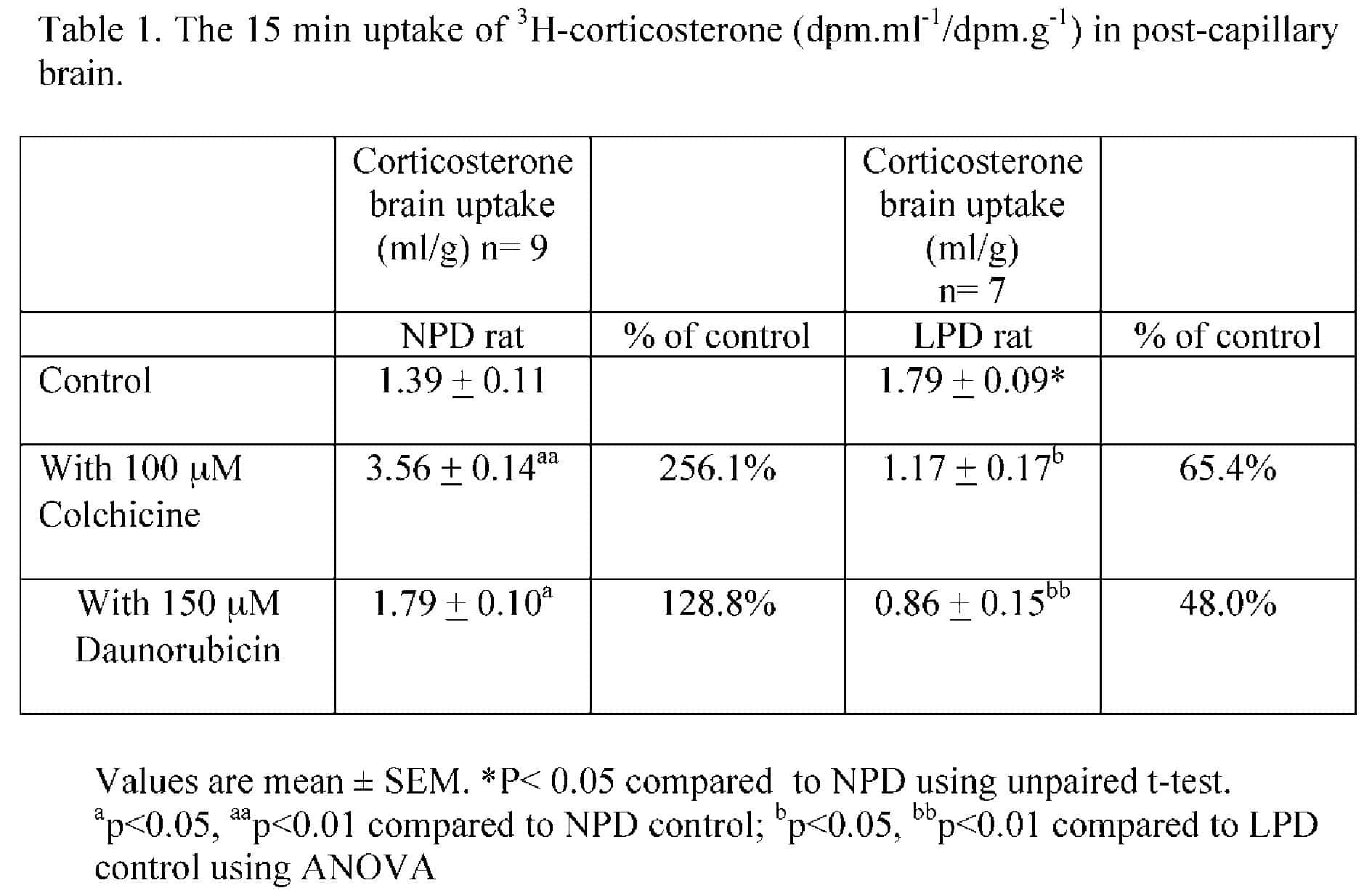Reduced early growth is a risk factor for cardiovascular disease, stroke, hypertension and type 2 diabetes. Changes in the hypothalamic-pituitary adrenal axis (HPAA) activity are involved, and regulation in part by glucocorticoid feedback to brain. One determinant of glucocorticoid activity in brain is transfer of hormone across the blood-brain barrier (BBB). This study investigated glucocorticoid (in rat, corticosterone) delivery from blood to brain in normal and protein deprived rats.
Brain penetration of 3H-corticosterone was investigated by using whole body perfusion followed by brain capillary depletion (Preston et al. 1995) in 3-week-old Wistar rats anaesthetised I.P. with hypnorm (0.4ml kg-1) and hypnovel (0.4ml kg-1) and humanely killed by cervical dislocation. Rats born of mothers fed a low protein (8 %) diet (LPD rats) or a normal protein (20 %) diet (NPD rats) beginning 2 weeks prior to mating and continuing through out gestation and lactation were perfused with a dextran ringer containing 3H-corticosterone (0.3 Mbq 100 ml-1) and vascular marker 14C-mannitol (0.15 Mbq 100 ml-1) for up to 30 min.
Brain uptake of 3H-corticosterone was linear over this time course in both NPD (n = 9) and LPD rats (n = 9), with greatest uptake in the pituitary and choroid plexuses, which lack the characteristically tight BBB. Lower, but significant uptake was also seen in post-capillary brain samples, with corticosterone uptake rate, 12 times greater than mannitol. After 15 min perfusion, 3H-corticosterone brain uptake of LPD rats was 1.3 times higher than that of NPD rats (Table 1). Interestingly, the brain mannitol space was lower in LPD rats. Potential interaction of corticosterone with the multi-drug resistance protein (MRP) efflux pumps P-glycoprotein and ABCG2 was explored by adding either the P-gp substrate, colchicine (100 µM) or the ABCG2 and P-gp substrate daunorubicin (150 µM) into ringer. Both increased brain uptake confirming that corticosterone is a substrate for MRP efflux in NPD rats. This effect was not observed in LPD pups where uptake was reduced, suggesting a defect in MRP mediated efflux in offspring of protein deprived mother. The long term effects of dysregulation of glucocorticoid feedback to brain remains to be determined, but may contribute to altered hypothalamic-pituitary control of blood pressure as observed in humans with early growth reduction.
This work is supported by the British Heart Foundation.

